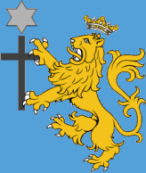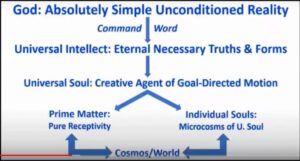Before he had begun publishing his major works, Rene Guenon engaged in an extended correspondence with the writer Noëlle Maurice-Denis, daughter of the painter Maurice Denis. In a letter from 1919, he explained his life project to Noëlle, which was to develop a “common understanding” “between various traditional doctrines.” In 1919, it was just an idea. A century later, his books are more read now than they were then. We can now hope that there are indeed “qualified individuals capable of taking the initiative of an effective rapprochement such as the one I am thinking of”. That is our task.
That defines the Traditional spirit as he understood it. Unfortunately, there are many who claim to be “Traditionalists” in Guenon’s sense, yet do note possess that spirit. Against those who reject Guenon, there is not much that we can say because there is little common ground. However, those without the spirit are a different case, worse actually, because they do not understand it. There are two main markers for that spirit:
- Look for rapprochement, not debating points
- Distinguish between theological and metaphysical perspectives. The latter is certain
As a thought experiment, we will use the Christian dogma of the Trinity, especially the so-called “filioque” clause as an example for this approach.
Theological issues
The Latin and Greek churches disagree on the theological formulation of whether the “Holy Spirits proceeds from the Father” or the “Holy Spirit proceeds from the Father and the Son.” Obviously, this debate has been raging for centuries without an end in sight. That is the disadvantage of the theological approach. Hence, that is the wrong way to achieve any rapprochement. We can make two quick points about this.
Not mandatory in the west
The filioque does not bear the same existential import in the West. The Uniate churches omit the filioque when they recite the Creed during Mass. No one thinks anything of it.
Alleged consequences
Those lacking the Traditional spirit often find the most bizarre consequences of the filioque. One that I’ve heard is that it implies that the Pope has power of the Holy Spirit. To prove that, it would be necessary to find that dogmatic formulation in Catholic dogmas; it is not true, so shame on the accuser.
Another one, which I only know second hand, is that the filioque leads to democracy. There is no school of logical inference in which that makes sense, and certainly history shows otherwise.
These are two examples of the partisan spirit that is opposed to the Traditional spirit. Finally, we turn to the great Russian theologian, Sergei Bulgakov. In his extensive study of the Holy Spirit, he had to concede that he could not find anything truly significant in the doctrine, certainly nothing that would make a difference in practice.
Another claim is that the omission of the filioque is more consistent with the Vedantic teaching. This is patently not the case. Without the filioque, the Son and the Spirit are left dangling from the Father with no relationship between them.
Metaphysical Issues
The situation looks different if we approach the issues from metaphysics rather then theology. Metaphysics, unlike theology, is certain. Then the theologians can interpret the metaphysical points in their own exoteric formulation.
Vedanta
We will use Guenon’s Man and his Becoming according to the Vedanta as our guide. This is a summary of the Vedantic trinity.
- Purusha: this is the transcendent One, beyond all manisfestion.
- Buddhi: this is the Universal Intellect, or the content of all the ideas of the One.
- Manas: this is the Universal soul or the inner sense, called “common sense” by the Scholastics.
Note that the relationship is hierarchical: Manas, or Holy Spirit, proceeds from the One through the Buddhi or Divine Intellect. The filioque “and” is equivalent to “through”; it is not that the Buddhi initiates its own procession.
Neoplatonism
Vladimir Solovyov, in the Lectures on Divine Humanity, demonstrates the Neoplatonic roots of the Trinity. A fortiori, he traces the origin all the way back the Hermes Trismegistus.
The Neoplatonic Trinity of the One, Universal Intellect, and the Universal Soul, is isomorphic to the Vedanta version. So common ground can be found there.
The Ismaili Muslim, Khalil Andani, has a series of youtube videos that explains the Neoplatonic Trinity in detail.
What is a Person
It was Plotinus who originated the notion of the “three divine hypostases”, not Christian theologians. This has often been translated as three “Persons”. In metaphysics a Person has a precise definition that is lacking in popular parlance. In everyday use, a Person is a conscious being with desires, feelings, and thoughts. As such, a person can contemplate options, make free decisions, etc.
However, in metaphysics, that is called the Individual. The individual is a part of manifestation, a very limited part actually, because the conscious part of the individual is very limited. The Person, on the other hand, transcends all manifestation and can never be the object of direct experience. Another formulation is the distinction between the Ego and the Self. In the Vedanta, the Self or Person is called atman.
God is the supreme person and is determined by nothing outside himself; otherwise, He would not be absolute. Yet, the Trinity follows from His nature, so in this sense the Trinity is necessary.
Here we can only provide a brief outline. For more detail, I can only recommend a close study of the three resources mentioned above. It is an important issue and well worth one’s effort and time.


Leave a Reply